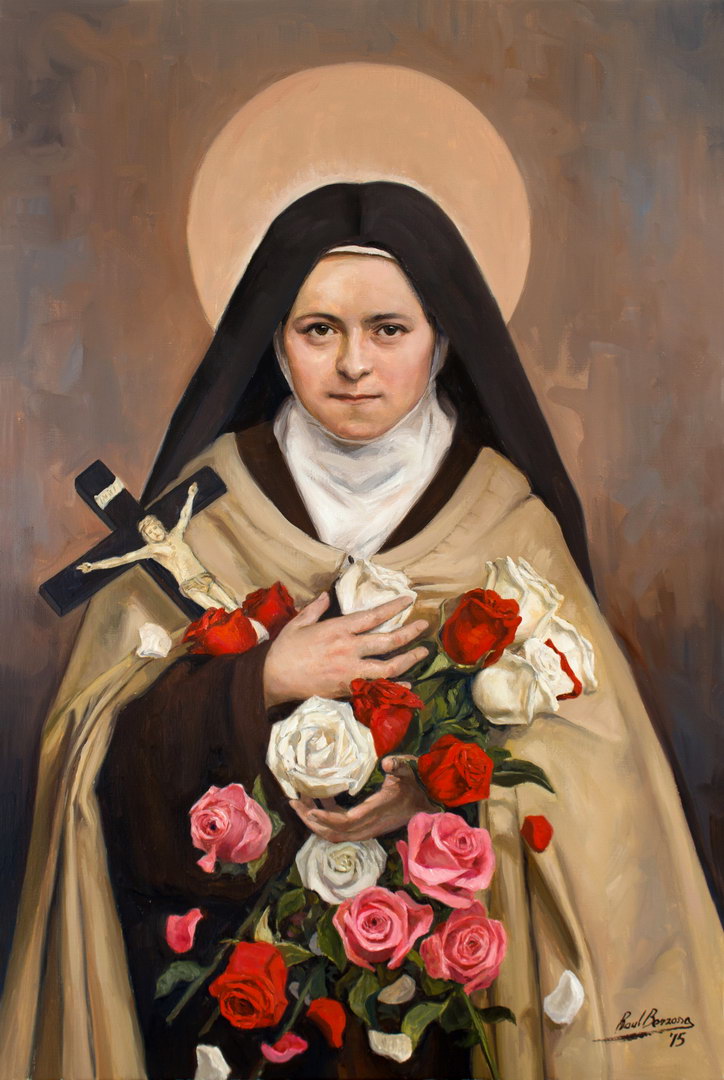By the end of her life, St. Thérèse had discovered an elevator to lift her up to heaven: the arms of Jesus. Before she found the shortcut, she had many stairs to contend with. Father James Geoghegan, OCD has visited some of the stairs in our saint’s life, climbed one of them, and meditated on all of them.
In April 1896, after climbing the stairs to her cell, St. Thérèse coughed up blood. It was the beginning of the end. At the same time, the brand new opera of Puccini, “La Boheme,” presented to the world a tragic romantic heroine. Mimí, dying from tuberculosis, enters the garret where Rudolfo asks her if she feels ill. “No, it’s nothing,” she says. “I’m just out of breath, it’s the stairs.” The fictional character and the saint would have understood each other.
Thérèse, throughout her life, had to climb stairs to go to bed. Today, a pilgrim visiting the shrines of St. Thérèse discovers that stairs played a significant role in her life and spiritual development.
Alencon
When you enter the house where Thérèse was born, ahead of you are the hallway and the stairs leading up to the bedrooms. The stairs rise in a high, steep, elegant curve. As a child, Thérèse tried to climb them. Later, she told her novices to keep persevering like a little child climbing a steep staircase.
In a letter to Pauline, Zélie Martin describes her daughter fearfully ascending those stairs “crying out ‘Mama Mama’” at each step. If Zélie forgot to say, “Yes, my child,” Thérèse would stop and not go any further. The steepness of those stairs would be frightening for a little child. Eventually, her mother would come and pick her up and carry her to the room upstairs.
Later, Thérèse saw this as an image of her life. Though she is weak and frail, God reaches down and carries her in his arms like a loving mother.
Each morning, Zélie came down those stairs to go to morning mass. When she became too weak from cancer to descend the stairs, she and her family knew that the end was near. Standing at the foot of the stairs, Thérèse, aged four years, saw the coffin for her mother. She died in the bed in which she had given birth to Thérèse. Zélie’s body was carried down the stairs and brought to the Church of Our Lady, where 19 years before she had married Louis and where Thérèse was baptized.
Lisieux
Three months later, Louis and the five girls moved to Lisieux where they rented the delightful “Les Buissonnets.” Thérèse loved this house, “For there my life was truly happy.” The house is charming, in lovely grounds. It is smaller than it appears in photographs. The kitchen and dining room are on the ground floor. A short staircase with angular turns leads to the bedrooms upstairs. On Christmas night, the almost 14-year-old Thérèse rushed up and down those stairs on her night of illumination, the night of her conversion, when she grew up and became a strong woman of the Lord. She had returned from Midnight Mass. In the middle of December, it is a cold time in Normandy. With Céline, she went up to their bedroom and they took of their hats and coats. Thérèse heard her father, who was not well and who was tired and cold at this late hour, complain that Thérèse was still acting like a spoiled child and it was time for her to grow up. She was hurt, but Jesus had changed her through the Christmas Eucharist. Jesus had done in a moment what she had not been able to do in ten years. Instead of weeping and feeling sorry for herself, she bounded down the stairs and, with the happy appearance of a queen showed her gifts to her father who soon regained his own cheerfulness. Soon everyone was happy celebrating the birth of the Infant Jesus and, without realizing it, the birth of Thérèse into womanly spiritual maturity (to be continued).
SOURCE: Carmelite Digest, Autumn 1997, reprinted with permission
Copyright 1997, Father James Geoghegan, OCD

